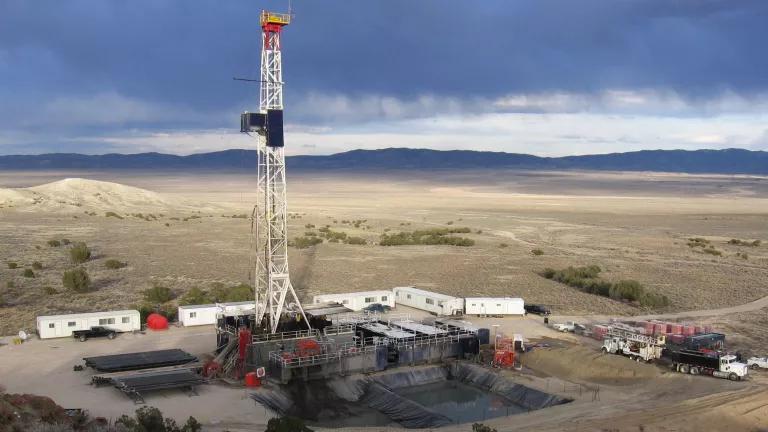Biden Administration Launches Cleanup of Oil’s Messy Legacy
The Interior Department is giving $1.15 billion to states in its first round of funding to clean up old, oil and gas wells. The investment helps create thousands of good-paying jobs and address an intractable environmental issue.

Laurie Barr, cofounder of Save Our Steams Pennsylvania, searches abandoned oil wells for pollutants as an old pumpjack stands in the Allegany National Forest near Marienville, Pennsylvania.
The Biden administration is bringing new urgency to fixing orphaned oil and gas wells—oil and gas production sites that have been left behind, uncapped, and with no known owner. For more than a century, oil and gas producers have been drilling wells across the nation, and orphaned wells can now be found in a majority of states.
The problem is especially severe in the major oil and gas producing regions, but figuring out how many wells there are depends on who you ask. Before the Infrastructure Investment and Jobs Act of 2021, there were around 57,000 orphaned wells across the country, according to the Oil and Gas Conservation Commissions (OGCC), the body tasked with tracking the location and status of these wells. With the infusion of up to $4.7 billion from Congress, that number suspiciously jumped to 130,000—an occurrence that should raise eyebrows and questions about the incentives industry has to accurately report information to oversight bodies. Even with that significant jump in probable orphaned wells drawn from OGCC data, the EPA has provided an even more sobering estimate of 2.15 million unplugged wells (of a total of 3.11 million potential orphaned and abandoned wells).
Why are orphaned oil and gas wells a problem? At the most basic level they aren’t safe, and they bring a serious risk of pollution.
Over the years, a variety of incidents have demonstrated how dangerous orphaned wells are. Explosions and fires have ripped through residential areas; explosions have destroyed homes and led to fatalities; emissions to the air have led to unexplained illnesses; and chemicals seeping into groundwater have polluted drinking supplies. Then there’s the climate impact: orphaned wells are also a significant source of fugitive methane emissions—one of the most powerful greenhouse gases driving climate change.
But now there’s money to begin fixing this problem. It’s not enough to complete the job, but it will create thousands of new jobs in areas that have been deeply affected by the legacy of oil and gas production and its environmental harms.
Who’s Getting the Money?
DOI's Bureau of Land Management will administer the program, giving an initial round of $1.15 billion to states that expressed interest in receiving grants late last year. By the deadline, 26 states had indicated interest and the Biden administration will begin making investments ranging from $25 million to more than $100 million very soon. This initial amount is 25 percent of the total BLM is authorized to disburse through the Infrastructure Investment and Jobs Act’s provisions for orphaned well cleanup. Payments to states will be determined using a formula that includes state employment data, the number of known wells in a given state, and the estimated cost of cleaning up wells located in a given state.
It’s a huge step for the federal government to start addressing these environmental, health, and safety threats. But this is an even bigger job going forward, because we need to prevent the problem from happening in the future. Right now, Congress is considering legislation that would require oil and gas producers on public lands to carry significantly higher bonds (essentially liability coverage for the cost of clean-up and environmental remediation). That would ensure that in the future, oil and gas companies are on the hook for their legacy impacts and taxpayers aren’t left with the bill. These same reforms need to happen at the state level to truly confront this issue. But Congressional action to address harms to shared public lands is a smart place to start.



